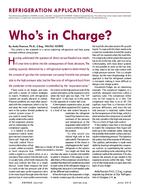Environmental aspects for the present and future should not only relate to the external emissions or discharges as regulated by various governmental authorities but should equally address internal environmental impacts, such as those potentially found in many university, medical, and research building complexes. Considerations of design, operation, and maintenance should be predicated based on cleanliness and reliable, safe, unhazardous surroundings rather than unrealistically weighing energy conservation or convenience. Many large multi-building campuses include central power plants with incinerators, boilers, water treatment, chilled-water refrigeration, and underground storage of fuels and chemicals. These plants, as well as the site distribution systems, potentially offer a myriad of environmental consequences relating to asbestos abatement, pathological waste handling and incineration, fuels and chemical storage, waste water effluent treatment, and polychlorinated biphenyl (PCB) remediation. The relationships and priorities in meeting governmental regulations while maintaining critical research and patient care responsibilities and cost-effective facilities management are discussed.
KEYWORDS: research, buildings, universities, district heating, air quality, outdoor, indoor, designing, operations, maintenance, hospitals, clinics, nursing homes, environment, asbestos, waste removal, refuse incineration, storing, waste water, effluent, treatment, polychlorinated biphenyls, regulations, costs, economics, building management, air pollution
Citation: ASHRAE Trans. 1992, vol.98, Part 1, Paper number AN-92-12-4, 1062-1064, 4 figs., 1 tab., 1 ref.
Product Details
- Published:
- 1992
- File Size:
- 1 file , 290 KB
- Product Code(s):
- D-18068


